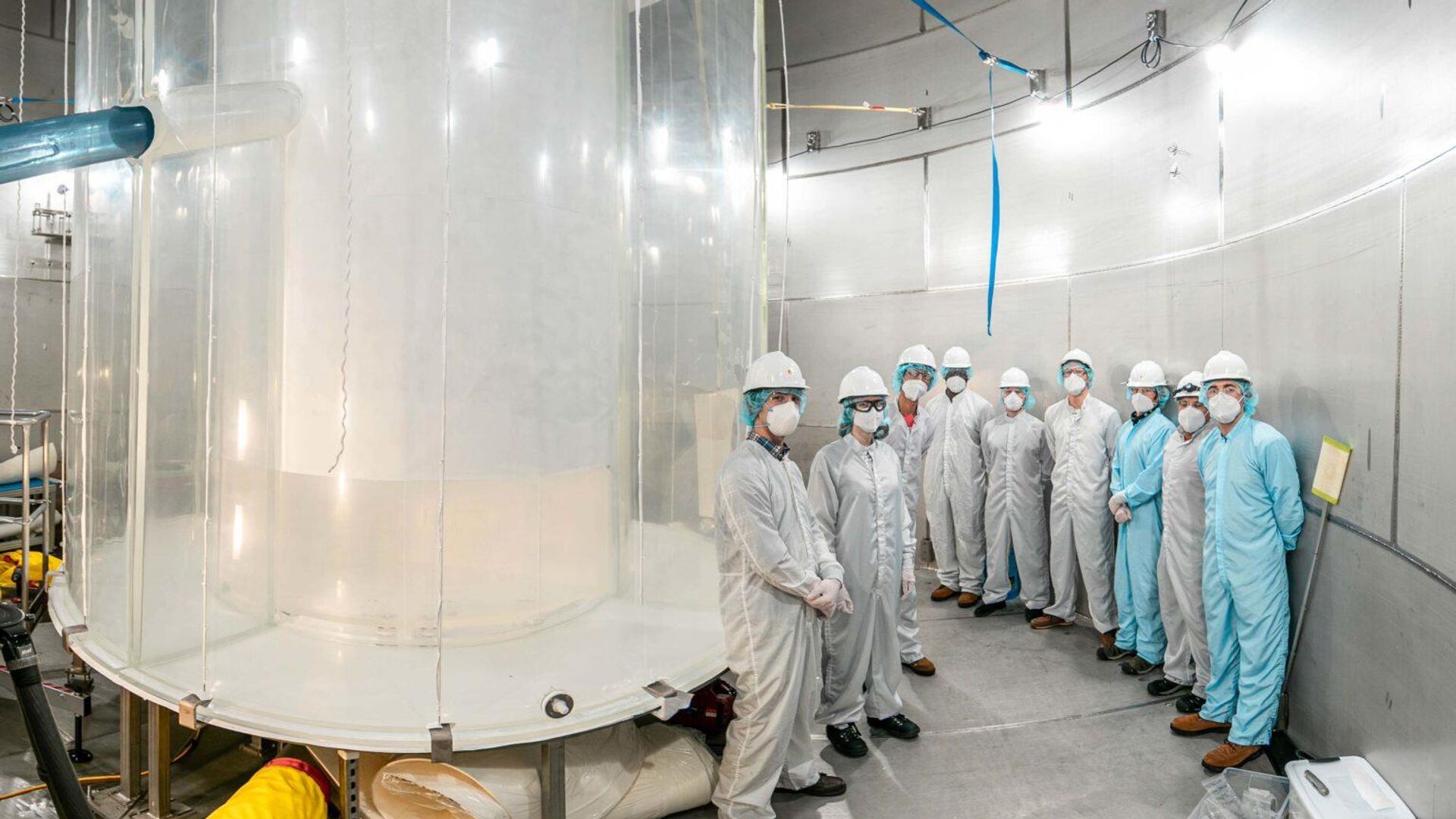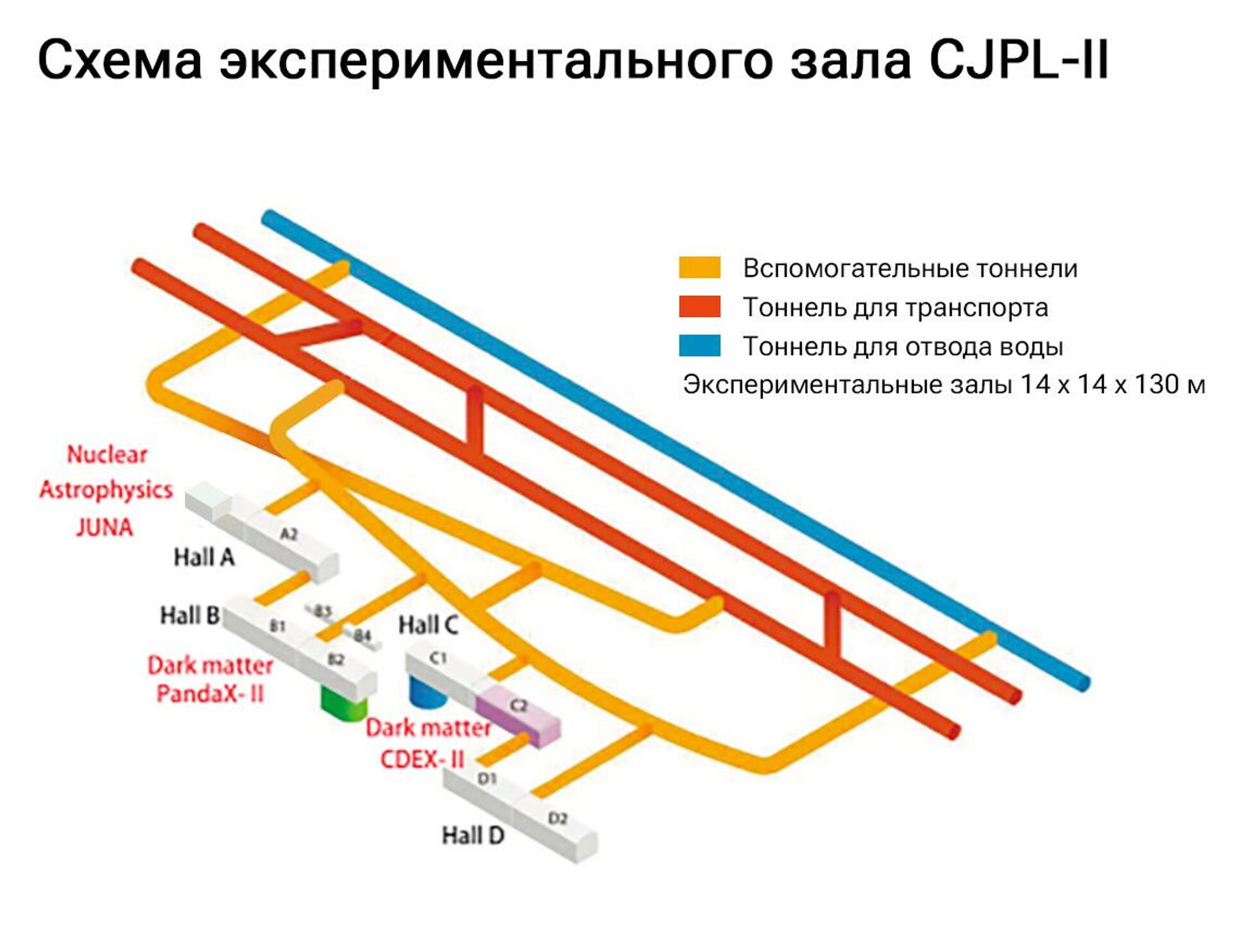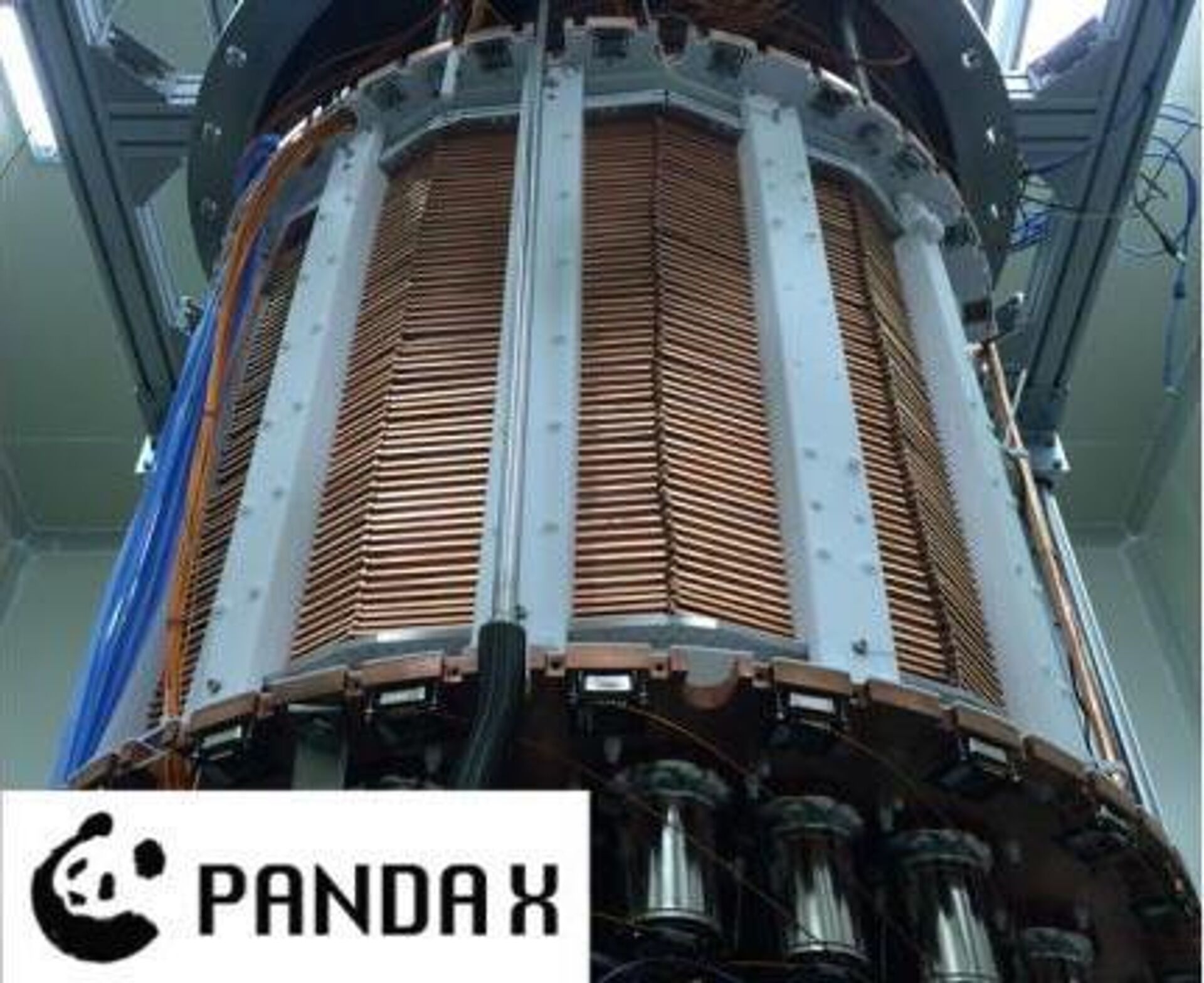
MOSCOW, February 1, Tatyana Pichugina The world's largest underground laboratory for the search for dark matter, an elusive substance that accounts for a considerable share of the matter of the Universe, has been opened in China. Two experiments directly record particle flows from the dark galactic halo.
Discovery of a dark something
According to modern concepts, most of the mass of galaxies is invisible and inaccessible to registration by any of our instruments. Scientists are convinced that the substance hidden from us is a special type of matter. It is called dark matter.
It has been calculated that dark matter accounts for at least a quarter of the total matter in the Universe. It does not interact with electromagnetic radiation and does not emit anything itself. It manifests itself only in gravity.
The existence of dark matter is indicated by the speed of the orbital circular motion of stars in the gravitational field of galaxies. Simply put, the visible mass of all the stars and gas in the galaxy is not enough to prevent them from flying apart. This means there is an invisible mass. It is assumed that galaxies are immersed in a halo of dark matter.
Dark matter is also evidenced by gravitational lensing — the anomalous deflection of light from distant galaxies on the way to Earth. These distortions make it possible to determine the distribution of masses in galaxy clusters.
By according to the Planck space observatory, 83% of the density of matter in the Universe is dark (or 26.8% of mass-energy).
The structure of this substance remains a mystery. Almost a hundred years have passed since astrophysicist Fritz Zwicky hypothesized dark matter, but it has not been experimentally identified.
Dark matter particles must have mass because they interact with visible matter gravitationally. Possibly capable of weak interaction. It is believed that dark particles were born at the moment of the Big Bang and, apparently, are stable — since they still exist.
Numerous experiments have so far yielded nothing. There are more and more theoretical models explaining what results to look for. There is hope that new generation detectors will reveal the secret of elusive particles.
Underground dark matter detectors< /h3>There are many candidates for the role of carriers of dark matter. Weakly interacting massive particles, called WIMPs (Weakly Interacting Massive Particles) for short, attract particular attention. It is assumed that it is possible to register the product of their reaction — for example, a pair of neutrinos.
Neutrinos are also suspected of belonging to dark matter.
It is possible that dark matter consists of particles of the hidden sector — this is the name of the hypothetical objects that do not fit into the Standard Model. For example, a dark photon. Another theoretical candidate particle is the axion.
The search for dark matter is experiencing a renaissance thanks to theoretical developments and technological progress. Scientists have dozens of installations on Earth and in space at their disposal. In particular, the AMS experiment is being conducted on the ISS.
Great hopes are placed on the direct detection of WIMP in underground detectors. The deeper the installation is, the better. A thick layer of rocks shields from cosmic radiation and background radiation. For registration, use a container with a scintillator — germanium or liquefied xenon.
According to modern concepts, the solar system moves through a galactic halo, the particles of which form streams. The movement of the Earth in orbit creates annual fluctuations in the flow of dark matter, which can be observed.
A particle of dark matter collides with the nucleus of a liquid atom and bounces off, transferring energy to it. The excited atom emits light, which is recorded by photomultiplier tubes — they are used to tightly line the container with the scintillator from the inside. This will give an idea of the mass, spin and other properties of the WIMP.
It is estimated that there is a maximum of one interaction per kilogram of detector per year. Due to the rarity of events, it takes many years to collect statistics. The larger the detector and the more stable the scintillator, the higher the chances of success.
CJPL-II laboratory in China
The deepest is 2.4 kilometers, which means the most secure laboratory for the direct search for dark matter particles is located in the Jinping mountain range in China, in the tunnels of a hydroelectric power station.
The first stage was launched in 2010. All this time, two experiments were carried out there — CDEX (China Dark Matter Experiment) and PandaX (Particle and Astrophysical Xenon Detector).
The solid state semiconductor detector in CDEX is designed primarily to search for light WIMPs. It contains ten kilograms of pure germanium crystals. Recently, Nature reports, the second stage of tunnels, CJPL-II, was opened. This will increase the mass of the detector to one hundred kilograms. In the future — up to a ton.
The PandaX-4T has a two-phase detector with liquid and gaseous xenon inside a 900-kg water tank for better shielding. From 120 kilograms it was increased to four tons. In this parameter, the experiment approaches the performance of the new generation of dark matter detectors — the Italian LNGS XENONnT (8.6 tons, Gran Sasso) and the seven-ton LUX-ZEPLIN in the USA. The Chinese plan to reach 40-50 tons.
Several dark matter detectors are needed at once, physicists emphasize. This will allow you to check each other's results. Thus, in 2022, the PandaX collaboration has already established that the previously recorded signal on LNGS XENON is actually background.





























































Свежие комментарии